- Log in
-
- Sydney Overseas Office
- London Overseas Office
- Toronto Overseas Office
- Los Angeles Overseas Office
- New York Overseas Office
- Ulaanbaatar Overseas Office
- Dubai Overseas Office
- New Delhi Overseas Office
- Manila Overseas Office
- Jakarta Overseas Office
- Hanoi Overseas Office
- Kuala Lumpur Overseas Office
- Singapore Overseas Office
- Bangkok Overseas Office
- Map
- Sydney Overseas Office
- London Overseas Office
- Toronto Overseas Office
- Los Angeles Overseas Office
- New York Overseas Office
- Ulaanbaatar Overseas Office
- Dubai Overseas Office
- New Delhi Overseas Office
- Manila Overseas Office
- Jakarta Overseas Office
- Hanoi Overseas Office
- Kuala Lumpur Overseas Office
- Singapore Overseas Office
- Bangkok Overseas Office
Travelogues
-
-
-
[Hapcheon, Dals Garden] World Knowledge Carved in Millenium Hapcheon
-
01/21/2020
1.3K
-
0
0
-
-
-
-

Korea Travel Qrator
Mondal Shuvra
: Bangladesh

World Knowledge Carved in Millenium Hapcheon
November 09-10, 2019
#GayasanNationalPark #Haeinsa Temple #TripitakaKoreanaThemePark #Dalsgarden #Hapcheon
* Korea Travel Qrator : A travel expert who explores Korea Quality-certified facilities and conveys the feeling of travel through vivid experience contents.
01Gayasan National Park, HaeinsaGo where you feel most alive!
Where is the place you would feel most alive? Let us guess its nature and sacred places. There is a way to fully embrace the beauty of nature and a genuine peace of sacred sites once you visit Hapcheon-gun in the northwestern part of Gyeongsangnam-do, ~ 300 km away from Seoul. Here we could find variety of things to do and see, starting from healing at Dal’s Garden, walking at Gayasan Sorigil, meditating at millennial Haeinsa Temple, immersing in history at Tripitaka Koreana Theme Park and many others.
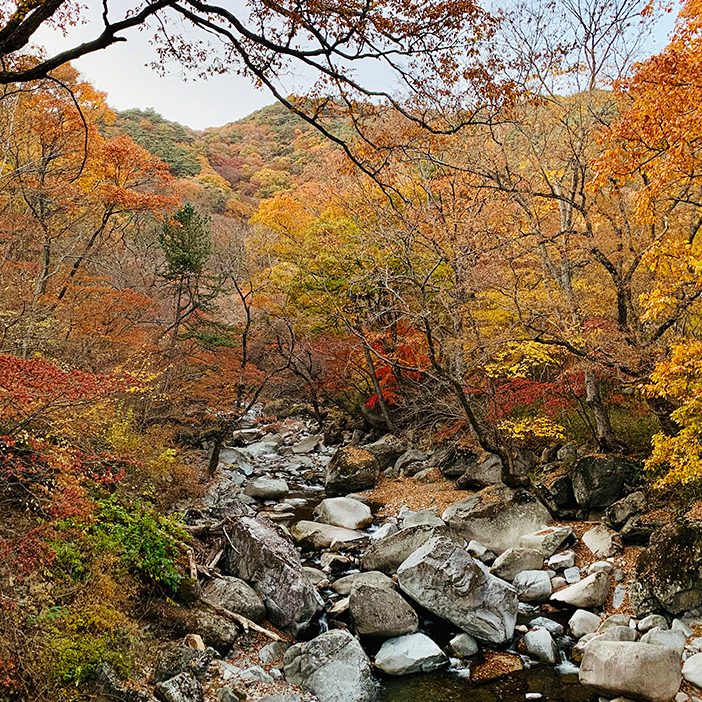
The hiking trail to Haeinsa Temple is very beautiful
The path to these places, breaking through the mountainous trees, is hilly and windy. Two-thirds of Hapcheon is surrounded by, Gayasan Mountain, Maehwasan Mountain and Hwangmaesan Mountain (its great, because the mountains create a picturesque backdrop, especially, during the fiery autumn). We could comfortably get to the major heritage – Haeinsa Temple, and nearby attractions by intercity buses (from Jinju/Daegu/Daejeon to Haeinsa Intercity Bus Terminal).
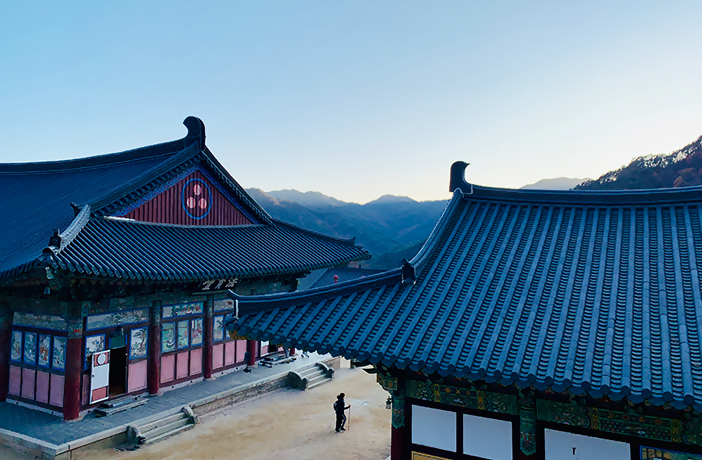
Breathtaking view of Gayasan Mountain from Haeinsa Temple
Haeinsa Temple, located just 2 km away from Haeinsa Intercity Bus Terminal on the stunning slopes of Gayasan Mountain (~ 700 m elevation, you can climb it up easily and with pleasure), is one of the Three Jewels Temples of Korea that represents dharma or Buddhist teachings. According to one legend, the temple was built in 802 by the order of king Aejang of Silla as a gratitude to two Buddhist monks for curing the queen’s illness. It is believed that the name Haeinsa (pinyin “Hae” meaning “sea”, “In” – “mark” and “Sa” – “temple”) means "Temple of Reflections on a Smooth Sea” and comes from a sutra that compares the Buddha's wisdom to a calm sea: “when the mind is freed from the wild waves of worldly desires and follies, it will attain a calmness in which the true image of all existence is clearly reflected.”
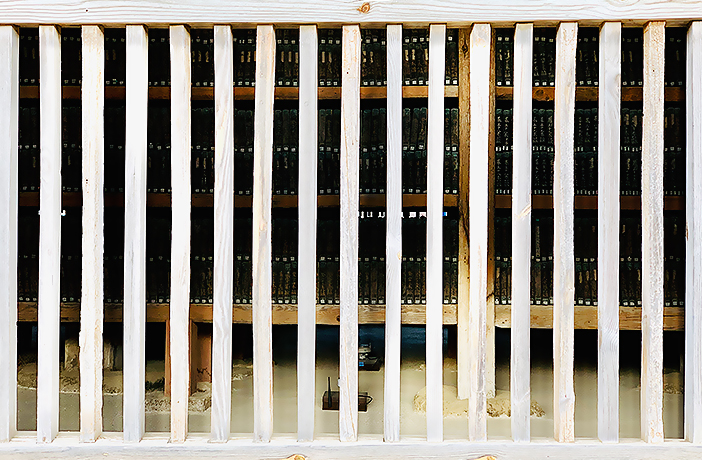
Tripiṭaka Koreana (or Goryeo Tripitaka) inside Janggyeong Panjeon
Walking around the park is delightful--here you can find carefully landscaped recreational areas with seating arrangements and ponds. I climbed up the hill and found myself in front of the Owolru Pavillion. It's a Hanok style tower featuring three levels with impressive city views opening up from the top floor. From here, you can even see the mighty silhouette of Mudeongsan Mountain.
Haeinsa Temple is mesmerizing by its magnificent architecture and historical value. In the 13th century there was the Mongols invasion in Korea (then known as Goryeo) resulting in severe structural damages including a demolition of the Tripiṭaka Koreana (or Goryeo Tripitaka) - the Buddhist canons in Chinese script carved onto wooden blocks, in 1231. Later, in 1236, by the order of King Gojong of Goryeo, they were recarved (it took 16 years) with the intention to earn the divine Buddha's protection for Korea during the war.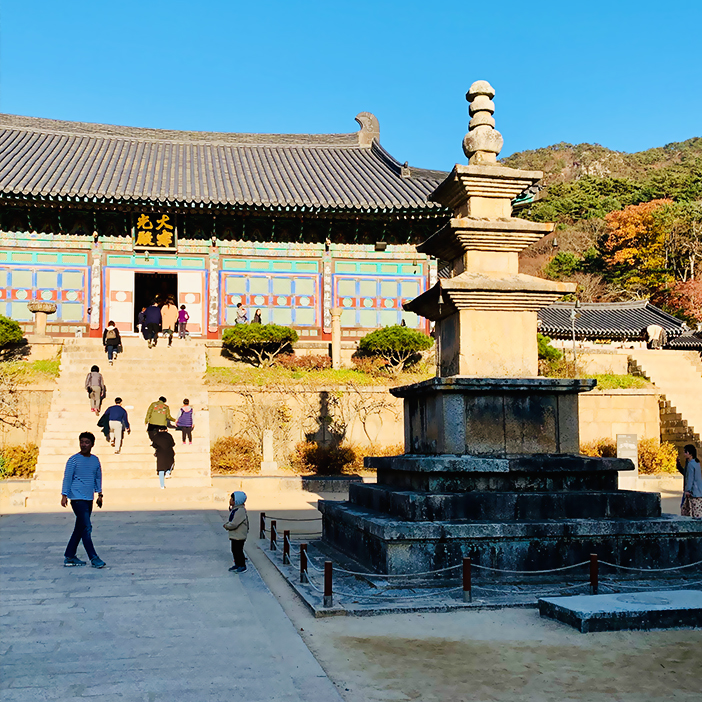
The stone pagoda and main hall in Haeinsa Temple
The resulting Tripitaka, consisting of 52,382,960 Chinese characters carved on 81,258 double-sided woodblocks, has been deposited on the library shelves in the oldest (1488) building of Haeinsa Temple called the Janggyeong Panjeon. Thus, the Tripiṭaka Koreana is considered to be the oldest, the most complete and the most elegant copy of the Buddhist scriptures in the world. The Janggyeong Panjeon and the woodblocks were designated a Korean national treasure in 1962 and a UNESCO World Heritage Site in 1995. We spent a meaningful and beautiful time at sacred Haeinsa Temple (Operating hours: 08:30-18:00/17:00 for summer/winter; admission (3,000 W/person) and parking (2,000-6,000 W) fees should be paid at the entrance to Gayasan National Park).
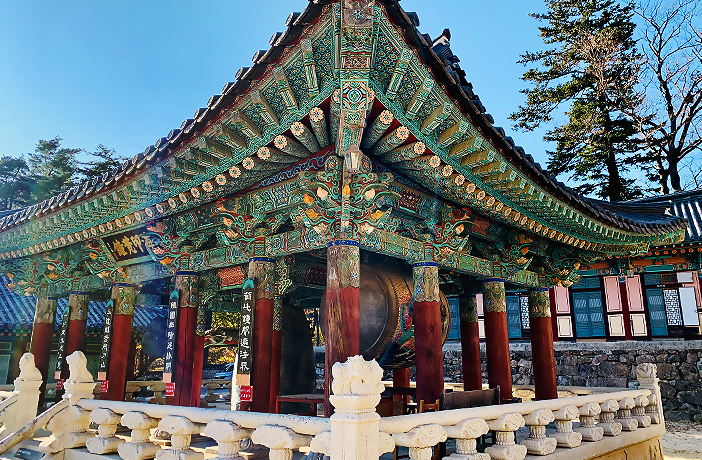
Inside Haeinsa Temple
02Tripitaka Koreana Theme Park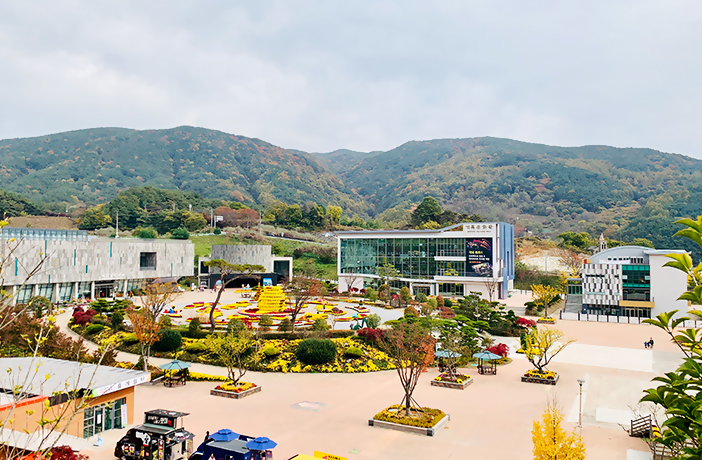
Overview of Tripitaka Koreana Theme Park.
Going down ~ 3.5 km more, we stumbled upon a glorious complex – the Tripitaka Koreana Theme Park. Its well-organized and cared territory with three towering buildings (Tripitaka Millennium Hall, Tripitaka Cinematic Hall and Archival Cultural Hall) immediately sparked our desire to visit the site. For the entrance fee of only 3,000 W/person (operating hours: 09:00-18:00/17:00 for summer/winter), the gateway to timeless wisdom and world memory of the Tripitaka Koreana was swung opened for us. We started our exploration of the site from the Tripitaka Millennium Hall that is a commemorative pavilion for the Buddhist scriptures.
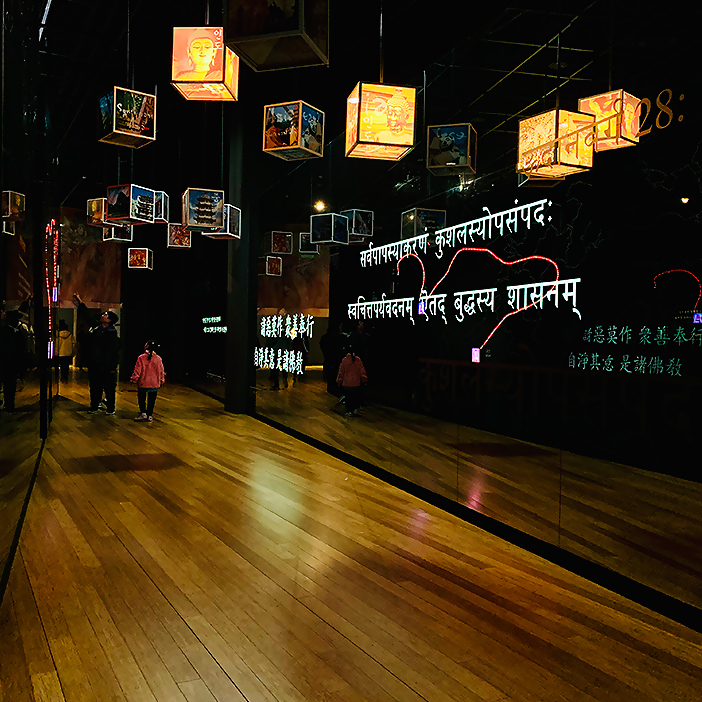
Inside of Tripitaka Millennium Hall
Here we were able to learn the birth of Buddhism and its spreading, to see how the Tripitaka Koreana was created and how it has been preserved until now for 1000 years becoming the world’s great heritage. In the Tripitaka Cinematic Hall, which has the 5D stereoscopic theatre on the second floor, we had a chance to watch a 3D animation featuring the production process of the Tripitaka Koreana on a 360-degree screen with special effects (wind, fog). The animation lasts for about 10 min and it is shown every hour from 10:30 to 16:30. It was absolutely an unforgettable experience. The hall also includes the virtual reality room on the first floor, where you can dive into the VR world (duration: 20 min; operating time: 10:00-16:00).
The Archival Cultural Hall includes archival culture experience and exhibition room, storage facilities etc., which are open for visitors to learn more about chronological events and history. It is spectacular how well the halls are equipped with artifacts, models and digital educational materials. From the child to the elderly – everyone can enjoy their time here.
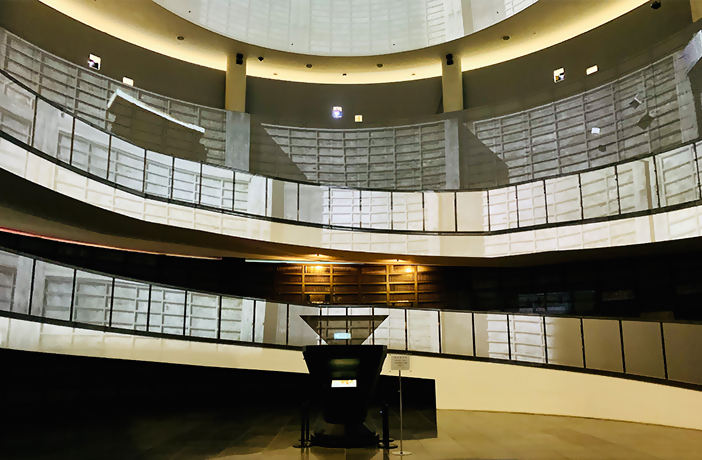
Inside of Tripitaka Millennium Hall.
Overall, the trip to Hapcheon printed in our minds numerous lasting memories of its historical glory and filled our hearts with its natural healing charm. We felt the most alive here and it was fantastic!
03Traveler's Room :
Night at the beautiful eco-hanok –
the Dal’s GardenThere is something magical about gorgeous mountains and ancient hanoks (Korean traditional house) that in some way complete each other. The peace one gets sipping a hot cup of coffee from a wooden porch overlooking colorful mountains on a fall morning is truly precious.
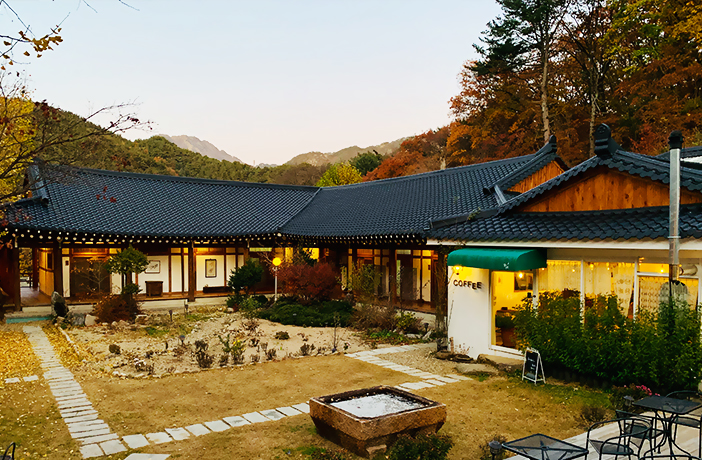
Dal’s Garden
The Dal’s Garden (달의저원), a traditional Korean style house/pension in the Gayasan National Park, offers this kind of magic from dusk till dawn. The modern facility grafted traditional Korean guesthouse has an old but graceful look.
The guesthouse welcomes you with its artistic walls without gate and the garden beyond it. Enter its territory and you will be conquered with a stunning view of hanok style home and cafe with Gayasan Mountain as a backdrop, and warmly greeted by the families of the owners and kittens (yes, wonderful kittens you can play with!). The toenmaru (a narrow wooden porch running along the outside of the room), pillars and tiles with quite a few unique antique decors are clean and shiny along with the rooms.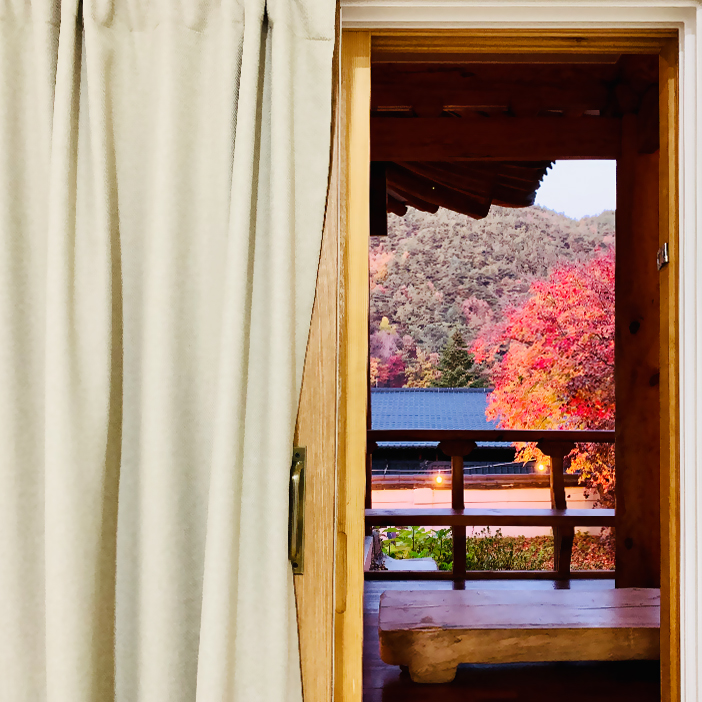
View from room
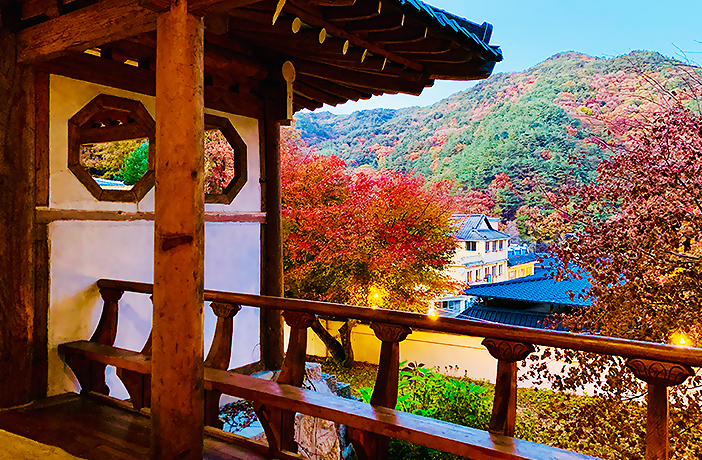
View
The Dal’s Garden has a total 10 rooms. Among them, 2 bigger special rooms equipped with a sink for group travelers, 1 room with a bed for solo travelers, and all other rooms are ondols. All the rooms, however, are well equipped with amenities like wi-fi, TV, a small fridge, coat hangers, a low wooden table, beddings, floor heating and air conditioner, and a modern bathroom attached. Though cooking in the room is not allowed, simple food and beverage can be consumed. Moreover, although the location of the guesthouse is kind of remote - in the mountain, but in the neighborhood, there are many Korean restaurants and some local markets.
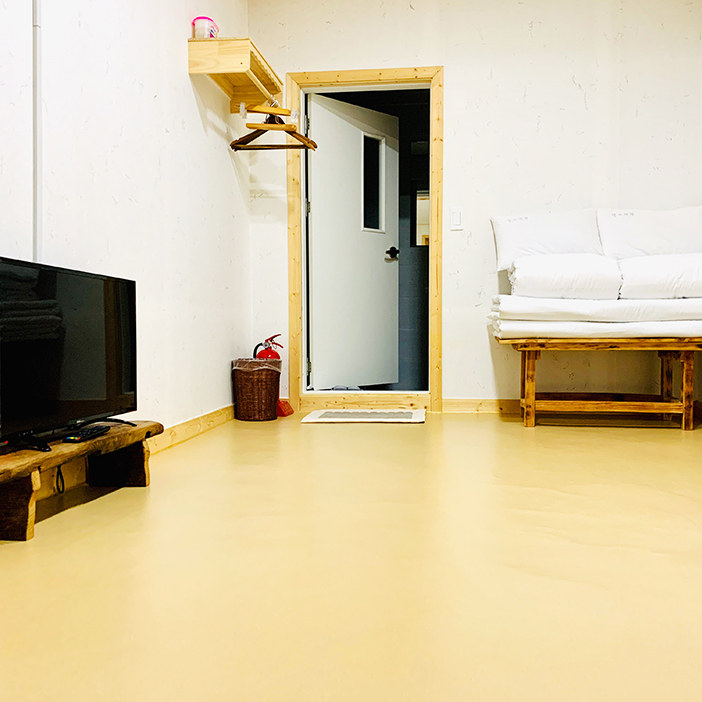
Inside room
The Dal’s Garden cafe works till 11 pm and serves as the owner’s office at the same time. It has a vintage boutique theme with a peaceful atmosphere. Here, guests can enjoy various beverages and good music, purchase some vintage clothes and pottery from the collection, and, of course, play with a kitten.
For booking a room, you can use their well informative Korean website, but a Korean phone number and bank transfer of payment would be necessary.
You can reach the guesthouse by taking a bus from Seoul Nambu bus terminal to Goryeong Intercity bus stop, and then take another bus to Haeinsa Intercity bus stop. It takes only 5 minutes from Haeinsa Intercity bus stop to reach the guesthouse.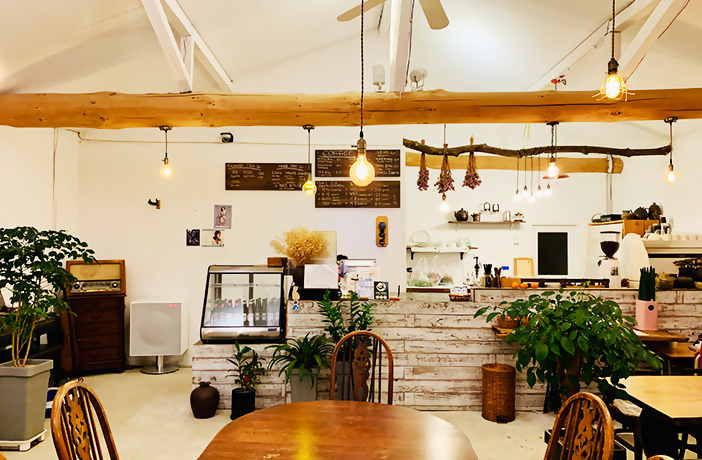
The coffee shop
Hotel InformationHotel Information - Hotel name, Website, Address, Price, Tel, Check in/out Hotel name Dals Garden Website http://dalsgarden.edenstore.co.kr/ Address 175-1, Suokjeong-gil, Goesan-gun, Chungcheongbuk-do Price 90,000 ~ 170,000 won Tel (+82)010-8839-0936 Check in/out 3PM / 11AM Korea Travel Qrator's Tip-The restaurants and markets nearby are operated by local elderlies and tend to close earlier.
-If you are into hiking there is an entrance to the national park right opposite of the guesthouse entrance.
-It is recommended to enjoy walking around the Haeinsa Temple early in the next morning or going up to nearby peaks such as Maehwasan Mountain or Namsan Cheil Peak.1. This column was last updated in November 2019, and therefore information may differ from what is presented here. We advise you to check details before visiting.
2. This travelogue is written by Shuvra Mondal.
All contents are opinions based on my own experiences.







